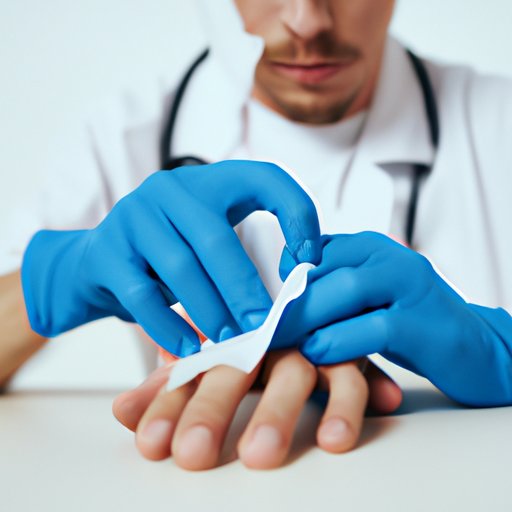Introduction
An open wound is any type of injury that results in a break in the skin. It can range from a small cut or scrape to a large laceration or puncture wound. Taking proper care of an open wound is essential to avoid infection and scarring. Fortunately, most open wounds can be successfully treated at home.
Cleaning the Wound
The first step of wound care is to clean the wound. Start by washing your hands with soap and water before touching the wound. Use mild soap and warm water to clean the wound, but do not use hydrogen peroxide or alcohol as these can damage tissue. Gently remove any debris from the wound with a soft cloth or cotton swab. Do not scrub the wound as this may cause further damage.
Applying an Antibiotic Ointment
Once the wound is clean, it is important to apply an antibiotic ointment to help prevent infection and promote healing. There are many types of antibiotic ointments available, so speak with your doctor or pharmacist about which one is best for you. Be sure to follow the application instructions carefully.
Antibiotic ointments provide a barrier between the wound and the environment, helping to prevent bacteria from entering the wound. They also keep the wound moist, which helps to speed up the healing process.
Covering the Wound
After applying the antibiotic ointment, it is important to cover the wound with a bandage. Choose a bandage that is large enough to cover the wound without putting too much pressure on it. Make sure the bandage is secure, but not too tight. If the wound is in an area that gets wet, such as the feet, use a waterproof bandage.
Changing the Bandage
It is important to change the bandage regularly to keep the wound clean and dry. How often the bandage should be changed depends on the type of wound and the amount of drainage. Generally, the bandage should be changed every day or two. When changing the bandage, make sure to wash your hands and gently remove the old bandage. Apply a new layer of antibiotic ointment and a fresh bandage.
Monitoring the Wound
As the wound heals, it is important to monitor it for signs of infection. Look for redness, swelling, pain, warmth, or drainage. If any of these symptoms occur, contact your doctor right away. If the wound does not seem to be healing, or if it begins to look worse, seek medical attention.
Conclusion
Open wounds can be safely treated at home, but it is important to take the proper steps to ensure that the wound is properly cleaned, covered, and monitored. Using an antibiotic ointment can help to reduce the risk of infection and speed up the healing process. If any signs of infection or other complications occur, be sure to seek medical attention.
(Note: Is this article not meeting your expectations? Do you have knowledge or insights to share? Unlock new opportunities and expand your reach by joining our authors team. Click Registration to join us and share your expertise with our readers.)
